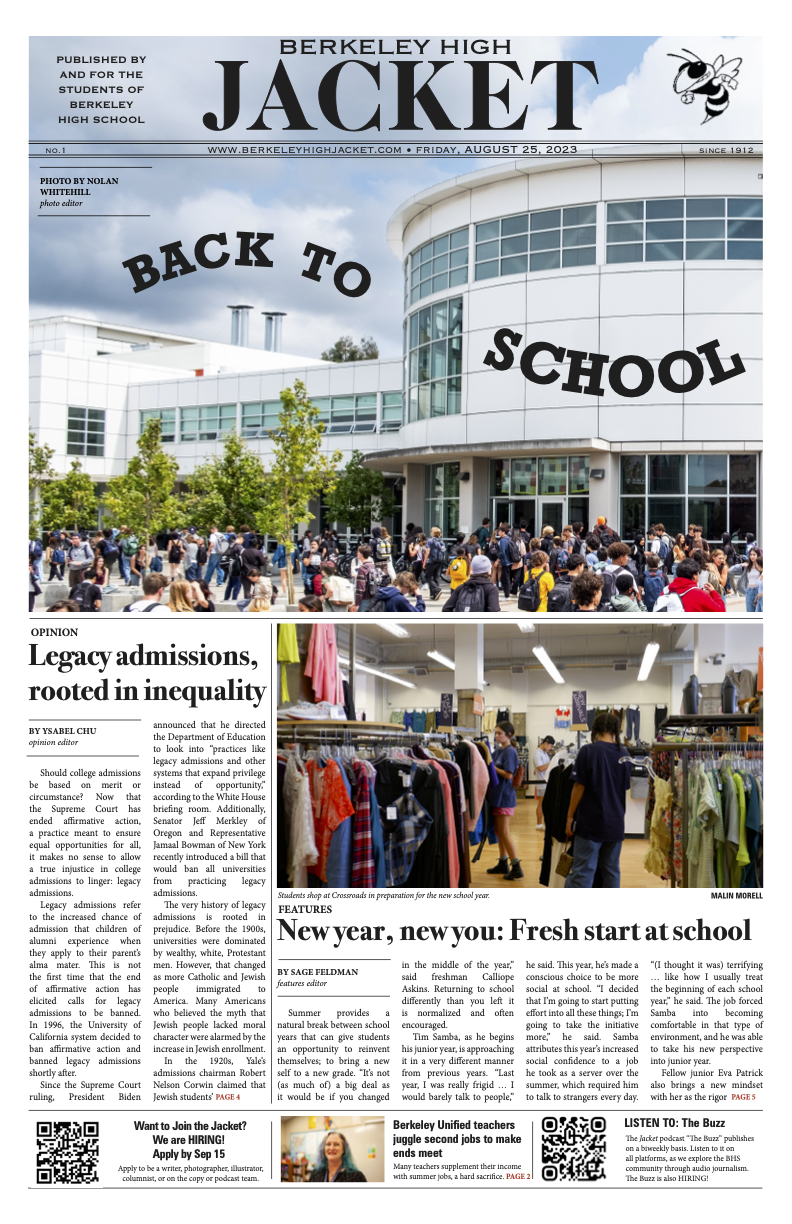On Wednesday, April 2, 2025, President Donald Trump signed off on Executive Order 14257, approving extensive tariff policies to be implemented starting on Saturday, April 5, 2025. The order outlined a 10 percent universal tariff on imports from all countries, excluding Canada and Mexico. Additional country-specific reciprocal tariffs were added starting on Wednesday, April 9, 2025 — 34 percent for China, 46 percent for Vietnam, 26 percent for India, along with 54 other country specific raises.
A tariff is a government-imposed tax on imported goods, often used to increase the prices of foreign goods in order to promote domestic manufacturing. According to Trump, this order was a declaration of the United States’ “economic independence.” He referred to the date as “Liberation Day.”
Kelly Boylan, an AP U.S. History and World History teacher at Berkeley High School, felt confused about Trump’s strategy regarding these tariffs.
“We don’t manufacture that much stuff in this country right now. So, it doesn’t seem like it necessarily will achieve the purpose he says it’s going to achieve, but it definitely is gonna make goods more expensive,” Boylan said.
The U.S. has a long history with tariffs, dating back to the late 1700s when tariffs were the main source of federal revenue prior to income taxes. Tariffs leading up to the Civil War benefited the more industrial Northern states while affecting the Southern states, which relied on agricultural trade and imported goods.
In 1930, President Herbert Hoover signed off on the Smoot-Hawley Tariff Act which raised tariffs on over 20,000 goods, increasing some over 60 percent. The goal was to protect American farmers and manufacturers while entering the Great Depression. Instead, other countries put up retaliatory tariffs, and global trade dropped by over 65 percent between 1929 and 1934. Most economists agree that the Tariff Act of 1930 prolonged the Great Depression.
“It’s been really interesting to see, like, a concept that we learned about in class as part of American history, show up in the news,” said Boylan.
One of Boylan’s students brought up the tariffs during one of her regular “Monday current events” conversations she has with her World History classes. Boylan reviewed what a tariff is, and the class discussed the purposes of Trump’s tariffs.
Trump has repeatedly adjusted his tariff plans since signing the order. On Wednesday, April 9, 2025, hours after reciprocal tariffs above 10 percent had gone into effect, Trump announced that there would be a 90-day pause on those tariffs for most countries except China. The minimum tariff rate for China was increased to 145 percent. According to Boylan, the chaotic nature of these tariffs is a major contributor to the dramatic decline in the financial markets.
On Wednesday, April 2, 2025, after Trump announced the tariffs, stock futures plummeted. The S&P 500 — a stock index tracking the top 500 biggest companies in the U.S. — dropped over 10 percent in two days. The volatility index (VIX), which gauges investors’ expectations on the market (where a higher VIX indicates higher uncertainty or fear), spiked to 45.31, the highest it’s been since COVID-19.
“It’s really affected a lot of financial plans, especially for college,” BHS senior Ines Boullosa Dirksen said. Many of Dirksen’s friends had money saved in stocks and bonds for college and did not receive financial aid due to that. “When the market crashed, they lost all this money, and it might be much harder for them to pay for college,” Dirksen said.
Most retirement savings are tied to the stock market. Approximately 70 million Americans have active 401(k) accounts — a retirement savings plan that invests a portion of users’ paychecks into mutual funds, stocks, or bonds.
“It definitely is affecting people whose retirement funds are invested in the market, which is pretty much everybody,” Boylan said.
BHS teacher Philip Halpern plans to retire this year. “Fortunately, because my wife and I are retiring as teachers, we’re not dependent on anything like a 401(k), which rises and falls with the market. Our pension is quite reliable,” Halpern said. While teachers’ pensions are also typically invested in the stock market, they are guaranteed by the state government, “so that’s on the state of California to figure out,” Boylan said.
Through the market crashes and rising cost predictions, the ripple effects following Trump’s “Liberation Day” executive order are already being felt. Uncertainty around the long-term strategy and consequences remains; Dirksen predicts that these decisions will cause backlash for the Trump Administration. “These harmful policies might wake people up and make us realize that we need to move towards change,” Dirksen said.





